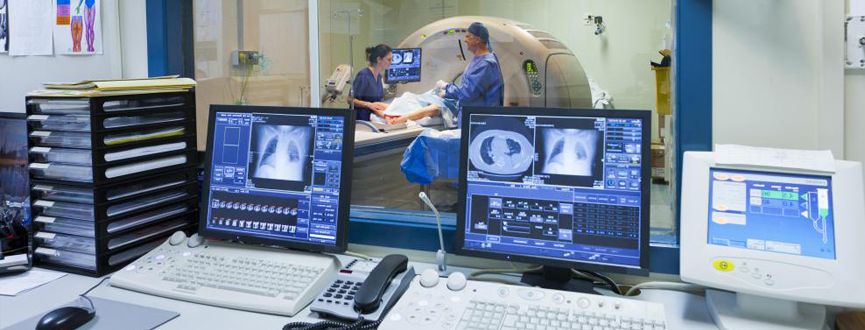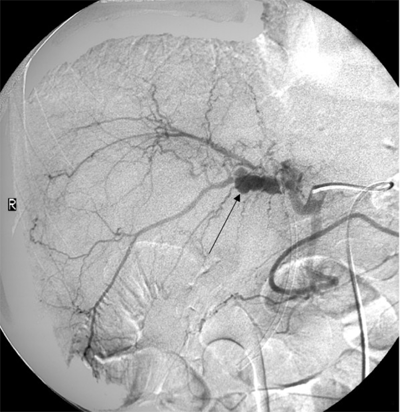
Interventional radiology (IR), also known as vascular and interventional radiology (VIR) or surgical radiology, is a sub-specialty of radiology providing minimally invasive image-guided diagnosis and treatment of diseases in every organ system. Although the range of procedures performed by interventional radiologists is broad, the unifying concept behind these therapies is the use of the most modern, least invasive technique available in order to minimize risk to the patient and improve health outcomes.

 As the inventors of angioplasty and the catheter-delivered stent, interventional radiologists pioneered modern minimally invasive medicine. Using X-rays, CT, ultrasound, MRI, and other imaging modalities, interventional radiologists obtain images which are then used to direct interventional instruments throughout the body. These procedures are usually performed using needles and narrow tubes called catheters, rather than by making large incisions into the body as in traditional surgery.
As the inventors of angioplasty and the catheter-delivered stent, interventional radiologists pioneered modern minimally invasive medicine. Using X-rays, CT, ultrasound, MRI, and other imaging modalities, interventional radiologists obtain images which are then used to direct interventional instruments throughout the body. These procedures are usually performed using needles and narrow tubes called catheters, rather than by making large incisions into the body as in traditional surgery.Many conditions that once required open surgery can now be treated non-surgically by interventional radiologists. By minimizing the physical trauma to the patient, non-surgical interventions can reduce infection rates and recovery time, as well as shorten.
Procedures

- Angiography:
- Imaging the blood vessels to look for abnormalities with the use of various contrast media, including iodinated contrast, gadolinium based agents, and CO2 gas.
- Balloon angioplasty/stent:
- Opening of narrow or blocked blood vessels using a balloon; may include placement of metallic stents as well (both self-expanding and balloon expandable).
- Cholecystostomy:
- Placement of a tube into the gallbladder to remove infected bile in patients with cholecystitis, an inflammation of the gallbladder, who are too frail or too sick to undergo surgery.
- Drain insertions:
- Placement of tubes into different parts of the body to drain fluids (e.g., abscess drains to remove pus, pleural drains). A common problem is that these tubes get clogged and have to be replaced or removed before all the material is drained.
- Vascular Intervention
- Endovascular aneurysm repair
- Embolization:
Blocking abnormal blood (artery) vessels (e.g., for the purpose of stopping bleeding) or organs (to stop the extra function e.g. embolization of the spleen for hypersplenism) including uterine artery embolization for percutaneous treatment of uterine fibroids. Various embolic agents are used, including alcohol, glue, metallic coils, poly-viny alcohol particles, Embospheres, encapsulated chemo-microsphere, and gelfoam. - Chemoembolization:
Delivering cancer treatment directly to a tumour through its blood supply, then using clot-inducing substances to block the artery, ensuring that the delivered chemotherapy is not “washed out” by continued blood flow. - Radioembolization:
Embolization of tumors with radioactive microspheres of glass or plastic, to kill tumors while minimizing exposure to healthy cells. - Thrombolysis:
Treatment aimed at dissolving blood clots (e.g., pulmonary emboli, leg vein thrombi, thrombosed hemodialysis accesses) with both pharmaceutical (TPA) and mechanical means. - Tissue sampling and destruction
- Biopsy
Taking of a tissue sample from the area of interest for pathological examination from a percutaneous or transjugular approach. - Radiofrequency ablation (RF/RFA):
Localized destruction of tissue (e.g., tumours) by heating. - Cryoablation:
Localized destruction of tissue by freezing. - Microwave ablation:
Localized destruction of tissue by heating. - Central venous catheter placement:
Vascular access and management of specialized kinds of intravenous devices (IVs) (e.g. PIC lines, Hickman lines, subcutaneous ports including translumbar and transhepatic venous lines). - IVC filters:
Metallic filters placed in the inferior vena cavae to prevent propagation of deep venous thrombus, both temporary and permanent. - Vertebroplasty:
Percutaneous injection of biocompatible bone cement inside fractured vertebrae. - Nephrostomy placement:
Placing a catheter directly into the kidney to drain urine in situations where normal flow of urine is obstructed. NUS catheters are nephroureteral stents which are placed through the ureter and into the bladder. - Radiologically inserted gastrostomy or RIG:
Placement of a feeding tube percutaneously into the stomach and/or jejunum. - Dialysis access and related interventions:
Placement of tunneled hemodialysis catheters, peritoneal dialysis catheters, and revision/thrombolysis of poorly functioning surgically placed AV fistulas and grafts. - TIPS:
Placement of a Transjugular Intrahepatic Porto-systemic Shunt (TIPS) for management of select patients with critical end-stage liver disease and portal hypertension. - Biliary intervention:
Placement of catheters in the biliary system to bypass biliary obstructions and decompress the biliary system. Also placement of permanent indwelling biliary stents. - Endovenous laser treatment of varicose veins:
Placement of thin laser fiber in varicose veins for non-surgical treatment of venous insufficiency.
